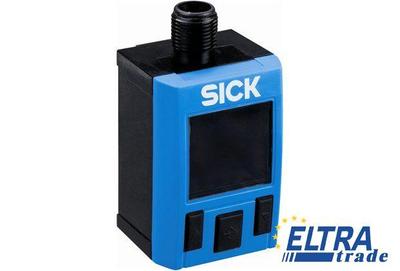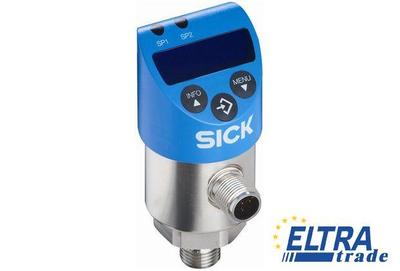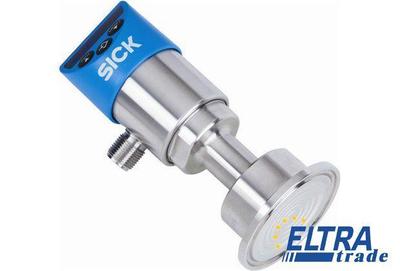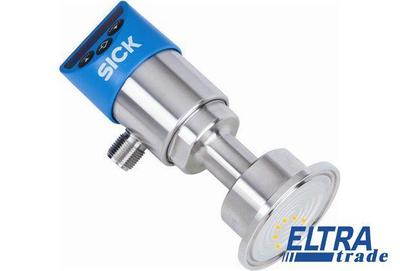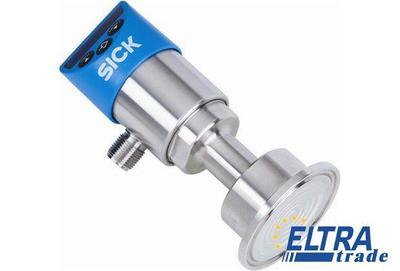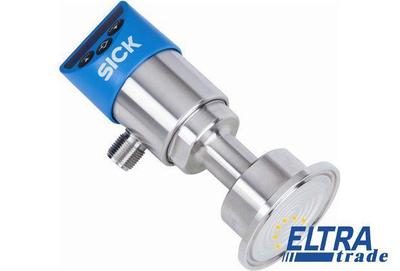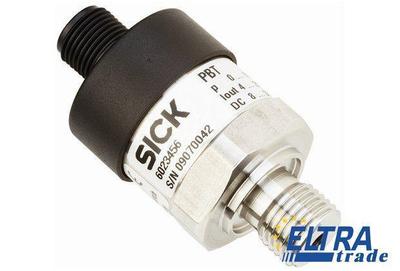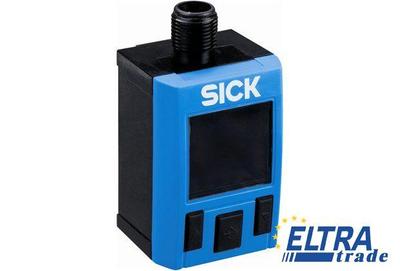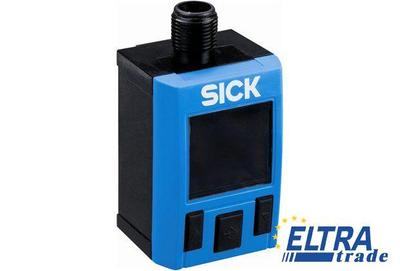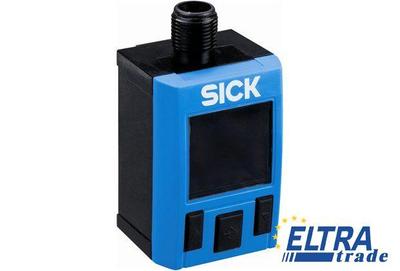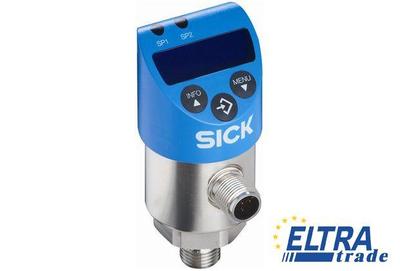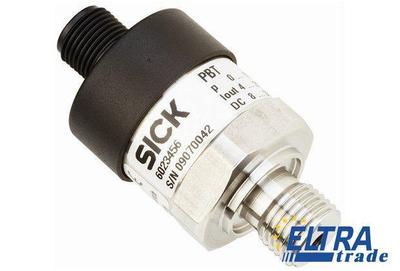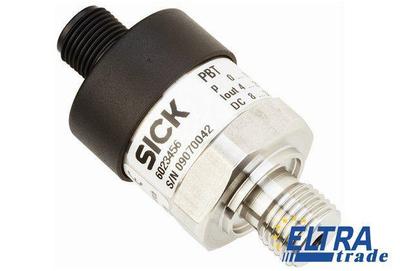Sick Pressure sensors
- Electronic pressure switch for pneumatic applications
- Large display shows system pressure, output states and set switching points
- Three large function keys and intuitive menu navigation
- Measurement ranges from 0 ... 1 bar up to 0 … 25 bar
- No moving parts: No mechanical wear, fatigue-proof, maintenance-free
- Stainless steel membrane
- Hygienically-graded pressure switch with display for the food and beverage industry
- Wetted parts are made from stainless steel 1.4435
- Individually programmable switching outputs and analog output
- Hygienically-graded pressure switch with display for the food and beverage industry
- Wetted parts are made from stainless steel 1.4435
- Individually programmable switching outputs and analog output
- Hygienically-graded pressure switch with display for the food and beverage industry
- Wetted parts are made from stainless steel 1.4435
- Individually programmable switching outputs and analog output
- Hygienically-graded pressure switch with display for the food and beverage industry
- Wetted parts are made from stainless steel 1.4435
- Individually programmable switching outputs and analog output
- Hygienically-graded pressure switch with display for the food and beverage industry
- Wetted parts are made from stainless steel 1.4435
- Individually programmable switching outputs and analog output
- Gauge pressure measurement ranges from 0 ... 1 bar up to 0 … 600 bar
- A large variety of available process connections
- No moving parts: No mechanical wear, fatigue-proof, maintenance-free
- Electronic pressure switch for pneumatic applications
- Large display shows system pressure, output states and set switching points
- Three large function keys and intuitive menu navigation
- Electronic pressure switch for pneumatic applications
- Large display shows system pressure, output states and set switching points
- Three large function keys and intuitive menu navigation
- Electronic pressure switch for pneumatic applications
- Large display shows system pressure, output states and set switching points
- Three large function keys and intuitive menu navigation
- Electronic pressure switch for pneumatic applications
- Large display shows system pressure, output states and set switching points
- Three large function keys and intuitive menu navigation
- Electronic pressure switch for pneumatic applications
- Large display shows system pressure, output states and set switching points
- Three large function keys and intuitive menu navigation
PAC50-FGF PRESSURE SWITCH art. 1086915
- Gauge measurement ranges from 0 ... 1 bar up to 0 ... 600 bar
- No moving parts: No mechanical wear, fatigue-proof, maintenance-free
- Stainless steel membrane
- Absolute pressure measurement ranges from 0 ... 1 bar up to 0 … 25 bar
- A large variety of available process connections
- No moving parts: No mechanical wear, fatigue-proof, maintenance-free
- Absolute pressure measurement ranges from 0 ... 1 bar up to 0 … 25 bar
- A large variety of available process connections
- No moving parts: No mechanical wear, fatigue-proof, maintenance-free
- Compound pressure measurement ranges from -1 ... 0 bar up to -1… +24 bar
- A large variety of available process connections
- No moving parts: No mechanical wear, fatigue-proof, maintenance-free
- Gauge pressure measurement ranges from 0 ... 1 bar up to 0 … 600 bar
- A large variety of available process connections
- No moving parts: No mechanical wear, fatigue-proof, maintenance-free
- Gauge pressure measurement ranges from 0 ... 1 bar up to 0 … 600 bar
- A large variety of available process connections
- No moving parts: No mechanical wear, fatigue-proof, maintenance-free
Sick is a well-known manufacturer of sensors, including pressure sensors. Such equipment has a wide range of applications in various industrial sectors. Below we will analyze Sick pressure sensors in detail.
Working Principle of Sick Pressure Sensors
Pressure sensors are designed to measure the force with which a liquid or gas acts on a sensitive element and convert it into an electrical signal.
Sick pressure sensors consist of a sensing element that deforms under the action of applied pressure. The sensing element can take various forms such as a diaphragm, a load cell, or a piezoelectric material.
When pressure is applied to a sensing element, it undergoes deformation, which may result in deflection, strain, or change in electrical properties. This deformation is directly related to the applied pressure. The deformation of the sensing element is converted into an electrical signal. The conversion method depends on the type of pressure sensor.
For example:
- Diaphragm-based sensors: Changes in diaphragm deflection are converted into electrical signals using techniques such as capacitive, inductive, or piezoresistive transduction.
- Strain Gauges: Strain gauge changes due to pressure deforming the strain gauge elements, causing a change in electrical resistance, which is then measured.
- Piezo sensors: Some materials generate an electrical charge in response to applied pressure, which is recorded as an electrical signal.
- Signal conditioning: The raw electrical signal resulting from the conversion process may require amplification, filtering, or linearization to improve accuracy and compatibility with the measurement system.
The processed electrical signal is provided as an output, which can be analog (eg voltage or current) or digital (eg digital communication protocols) depending on the sensor and its application.
Applications of Sick Pressure Sensors
Sick offers a wide range of pressure transmitters that are used in a variety of industries and applications.
- Industrial automation.
- Process control.
- HVAC systems.
- Automotive industry.
- Medical equipment.
- Environmental monitoring.
- Water resources management.
- Aerospace industry and aviation.
Factors to Consider when Choosing Sick Pressure Sensors
When choosing, for example, a Sick PBS pressure sensor, there are several factors to consider to ensure that the sensors meet your specific requirements.
- Pressure range. Determine the pressure range that the transmitter should measure. Consider both the minimum and maximum pressures required for your application. Verify that the selected sensor can accurately and reliably measure the pressure within this range.
- Pressure type. Find out if you need to measure absolute pressure, gauge pressure, differential pressure, or a combination of both. Different applications require different types of pressure, so choose a transmitter that supports the appropriate pressure measurement method.
- Accuracy and resolution. Estimate the required level of accuracy and resolution for your application. Consider the tolerances and accuracy required for your measurements. Applications with stringent requirements may require sensors with higher accuracy and resolution.
- Environmental conditions. Determine the environmental conditions in which the pressure transmitter will operate. Factors such as temperature, humidity, vibration, and exposure to dust, chemicals, or water can affect sensor performance. Choose sensors that are suitable for the specific environmental conditions of your application.
- Compatibility. Make sure the pressure transducer is compatible with the electrical and communication interfaces of your system. Check the type of output signal (analog or digital) and the voltage or current levels required by your system. If necessary, consider compatibility with communication protocols such as Modbus, PROFIBUS, or Ethernet.
- Physical design. Consider aspects of the physical design of the pressure sensor. Consider factors such as size, mounting options, and installation requirements to ensure that the sensor is seamlessly integrated into your application.
- Reliability and durability. Evaluate the reliability and durability of the pressure sensor. Look out for features such as rugged construction, high-quality materials, and resistance to environmental factors that can affect sensor life and performance.
- Support and documentation. Consider the availability of technical support and documentation provided by the manufacturer. Make sure you have access to the proper documentation, user guides, datasheets, and support channels for troubleshooting and assistance.
- Price. Finally, consider the cost of a pressure sensor and how it fits into your budget. Compare prices from different vendors based on sensor performance and features.
If you want to get more detailed information about the devices, we recommend that you study the Sick pressure sensor manual.
SICK Pressure sensor types
SICK Pressure sensors includes following Series:
- Electronic pressure sensor PAC50
- Pressure switch PBS Hygienic
- Pressure sensor PBT
- Pressure sensor PFT
If you want to get more detailed information about the devices, we recommend that you study the Sick pressure sensor manual.
